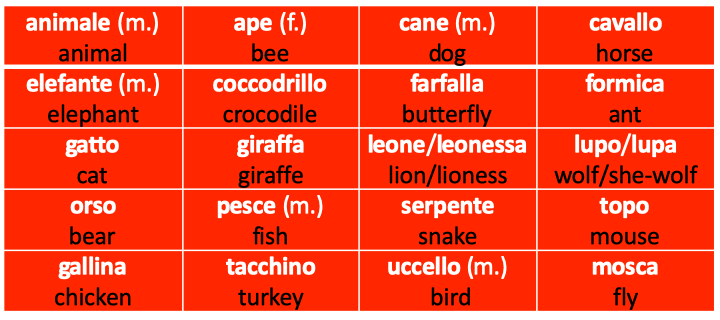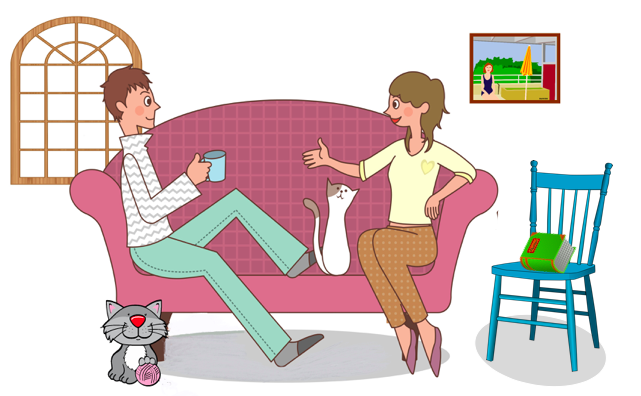About the ‘neuter’
| Listen to the recordings and find the corresponding character or object in the picture below. Then click here for the answers. 1.
2. 3. 4. 5. 6. 7. 8. 9. 10. 11.
|
- Unlike English, Italian assigns gender to all nouns. In addition, to the natural gender (ragazzo boy, ragazza girl), Italian has a grammatical gender that is related more to the form and sound of the noun than to its meaning. For example, nouns such as libro book, quadro painting, are masculine by convention, and nouns such as sedia chair and palla ball are feminine for the same reason
- There is no equivalent Italian form for it to refer to things (or wild animals). In this case Italian can use questo (m.)/questa (f.) ‘this’ but generally, it just let the verb stand-alone: Questo è un divano = È un divano (This/It is a couch), Questa è una finestra = È una finestra (This/It is a window)
- Che cos’è (questo / questa)? This question is the equivalent of What is it? or What is this? If in English you always must write or say it or this in Italian you can omit questo (it/this referring to a masculine noun) or questa (it/this referring to a masculine noun)
- Come è (questo / questa)? This question is the equivalent of How is it? or How does it look like? It is used to ask someone to describe an object (or wild animals). If in English you always must write or say it (or this) in Italian you can omit questo or questa
| Nouns that name things Nouns ending in -o are usually masculine, in -a are usually feminine. Nouns ending in -e can be either masculine or feminine. Nouns ending in a consonant are foreign nouns and are usually masculine. To practice vocabulary and pronunciation, use Quizlet.  |
| Animals Names of animals with both masculine and feminine forms such as gatto (male cat)/gatta (female cat), leone (male lion)/leonessa (female lion) are rare in Italian. Most of them have only one form and so one grammatical gender: -o (m.), –a (f.), -e (either m. or f.). To practice vocabulary and pronunciation, use Quizlet.  |
| More Adjectives To practice on vocabulary and pronunciation, use Quizlet.  |
Tasks
|
Practice
Previous > Descriviamo
Next > U2 Reading passages, songs, video clips, etc.
